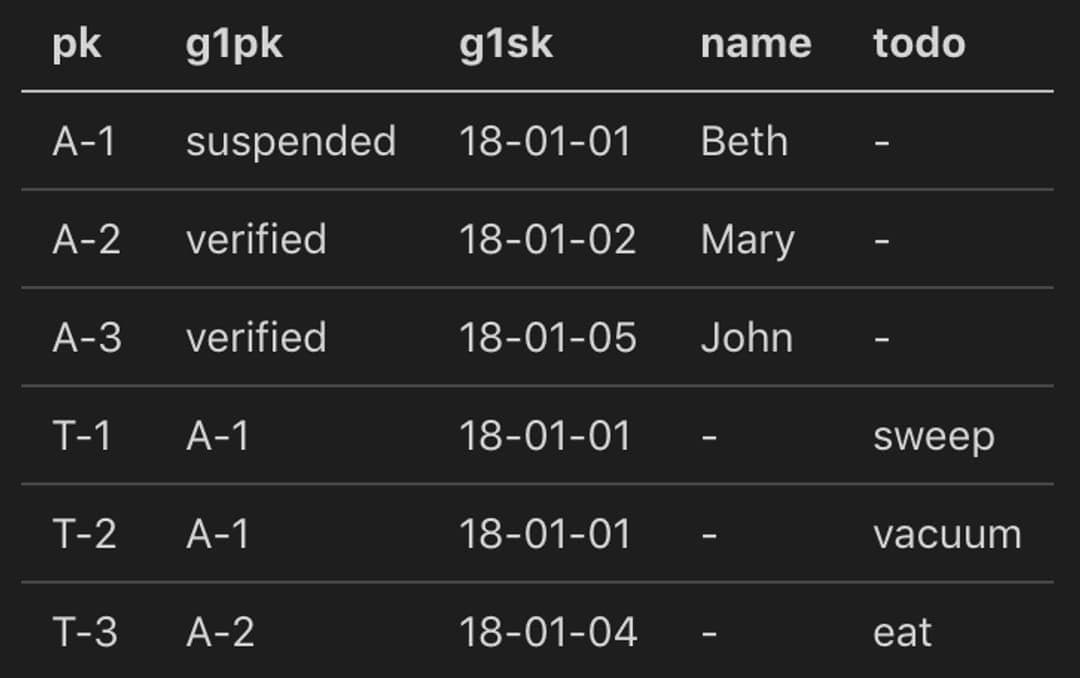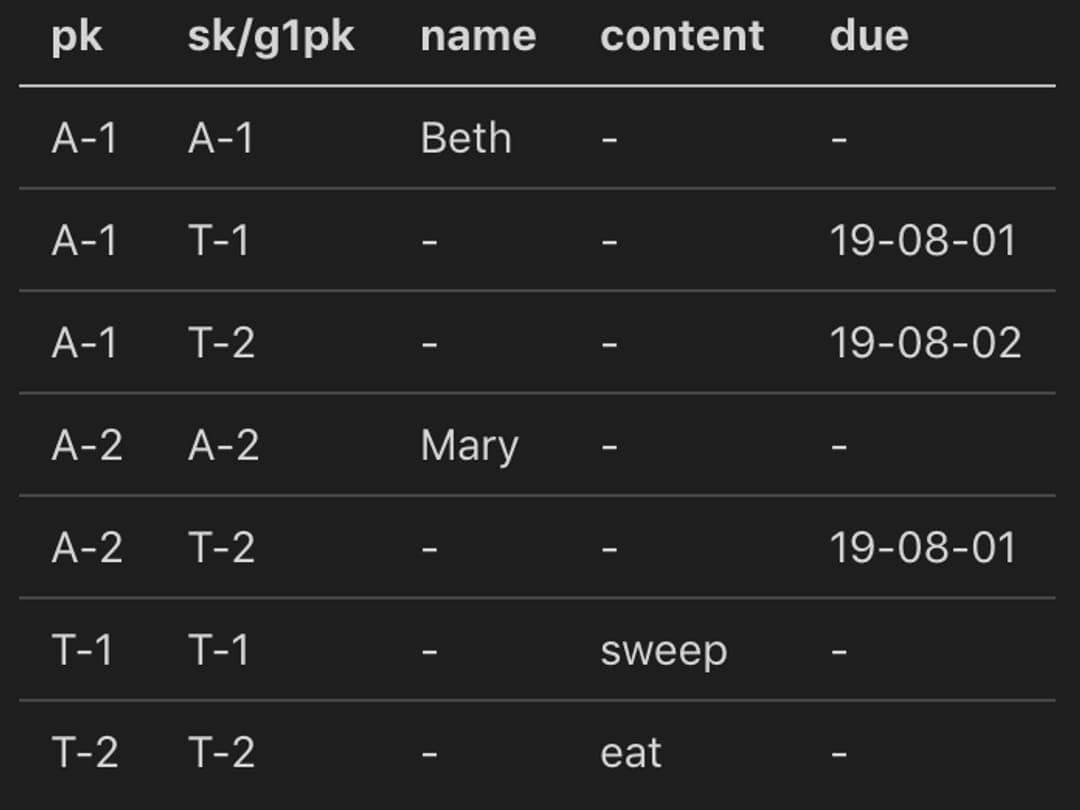DynamoDB
-
What is it?
- AWS's fully-managed, serverless NoSQL database
- Stored on SSDs across multiple AZs
- Serverless key-value/document NoSQL database
- Consistent single-digit ms performance (µs with DAX) at any scale (>20M reqs/sec)
- Encrypted, steams, instant backup, point-in-time recovery, HA, auto-scaling tables and storage, ACID transaction, pay-per-use, IAM
- Eventually consistent by default with support for strongly consistent reads
- Available DynamoDB Encryption Client in Java, can be used with KMS, CloudHSM, or your own keys
-
Why use it?
- Cursor-based paging eliminates timeouts and duplicate results
- No performance impact for new columns
- No need to cluster and/or shard in future
- Plays nicely with AWS Lambda
-
Limitations
- RDBMS: flexible queries, but expensive, less scale
- NoSQL: efficient queries in limited number of ways, other queries are expensive, slow
- Essential to understand access patterns up-front
- Amazon migrated 90% of their systems to Dynamo, it fits more data models than you realize
- Cursor-based paging would require either adapter to support limit/offset or new API version
- No COUNT, must be calculated separately
-
Data Modeling Approach
-
Create Entity-Relationship model as usual
-
List all real-time client access patterns
-
Ignore reporting, search, etc., use streams for this
-
If ad-hoc queries are required, stick to SQL
-
Design one table to store your entities with high-cardinality keys, possibly with overloaded indexes and composite sort keys
-
One-To-Many via Composite SK, table can be queried by pk and starts_with, between, >, < etc.
-
Index Overloading

DynamoDB index overloading - One table, one GSI - Table can be queried by ID for accounts and todo entities - GSI can be queried for accounts by status and for todos by account
-
Many-To-Many

DynamoDB many-to-many - One table, one GSI - Table can be queried by ID for accounts and todo entities and for todos per account - GSI can be queried for accounts by todo
-
-
Resources
- How to switch from RDBMS to DynamoDB in 20 easy steps, videos linked in article are great
- Best Practices
- NoSQL Workbench
- DynamoDB Toolbox
- Alex DeBrie's guide and book